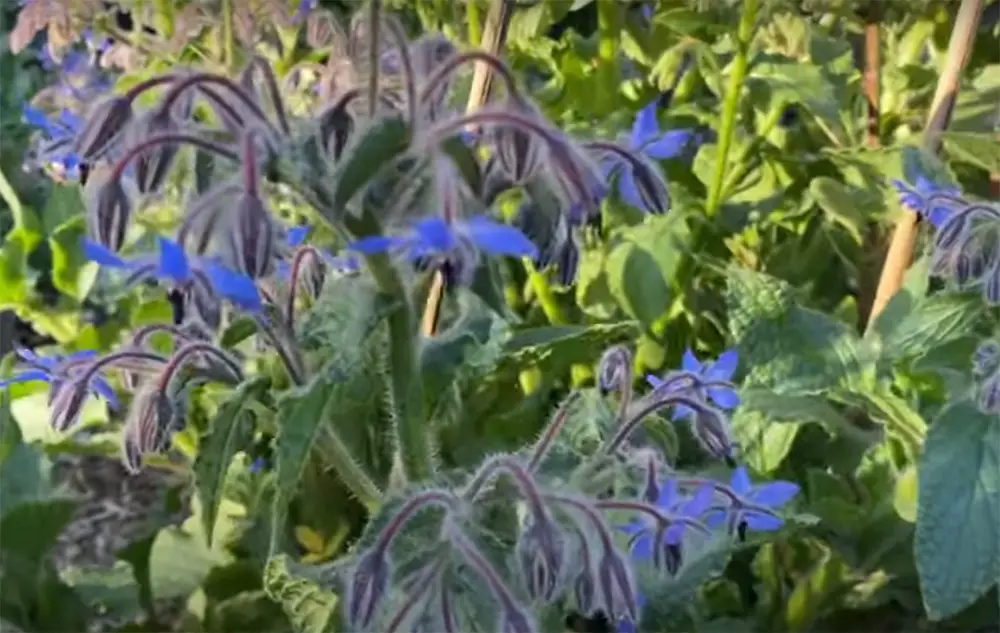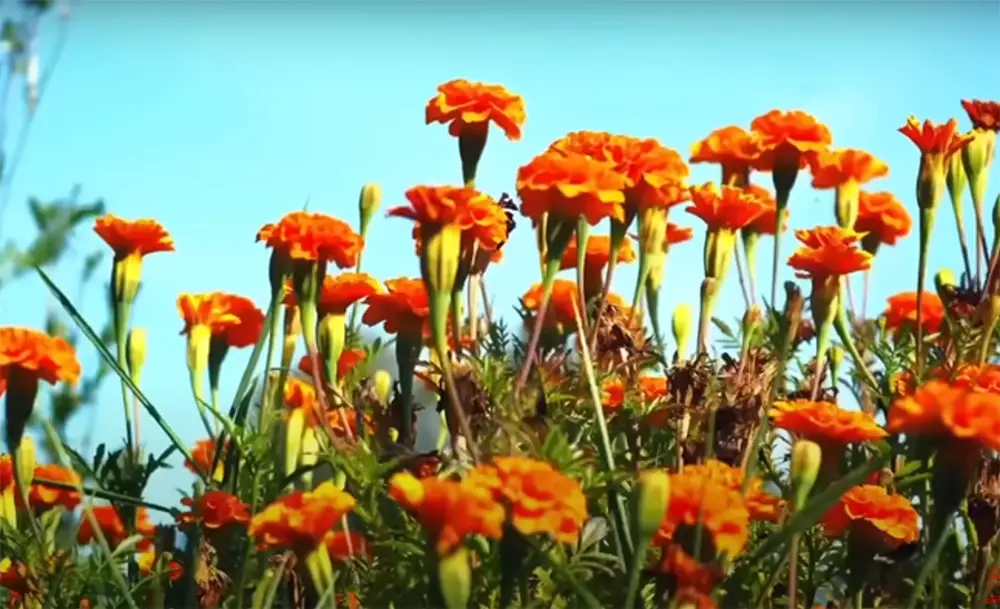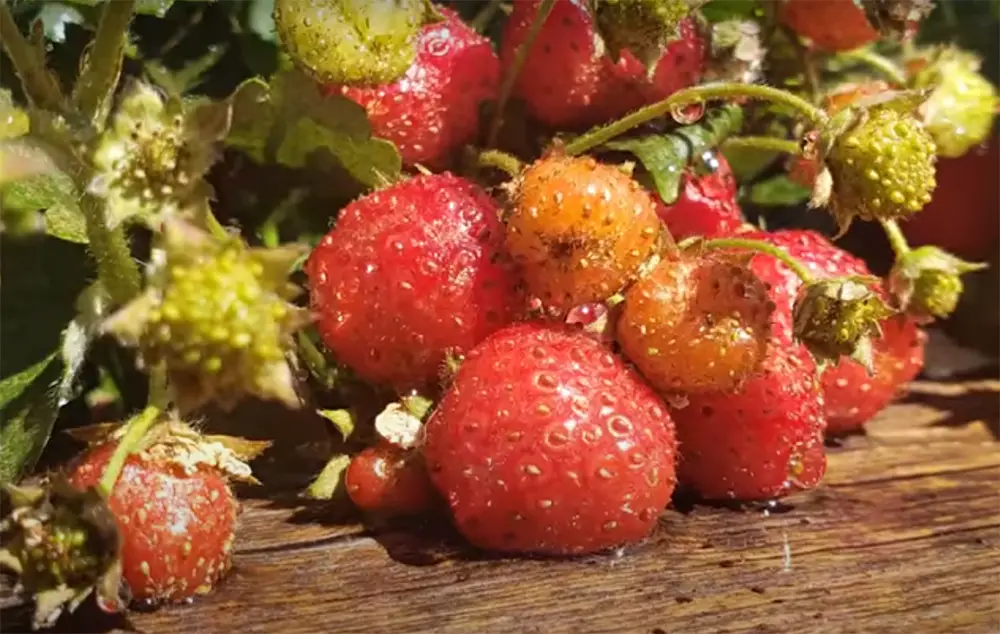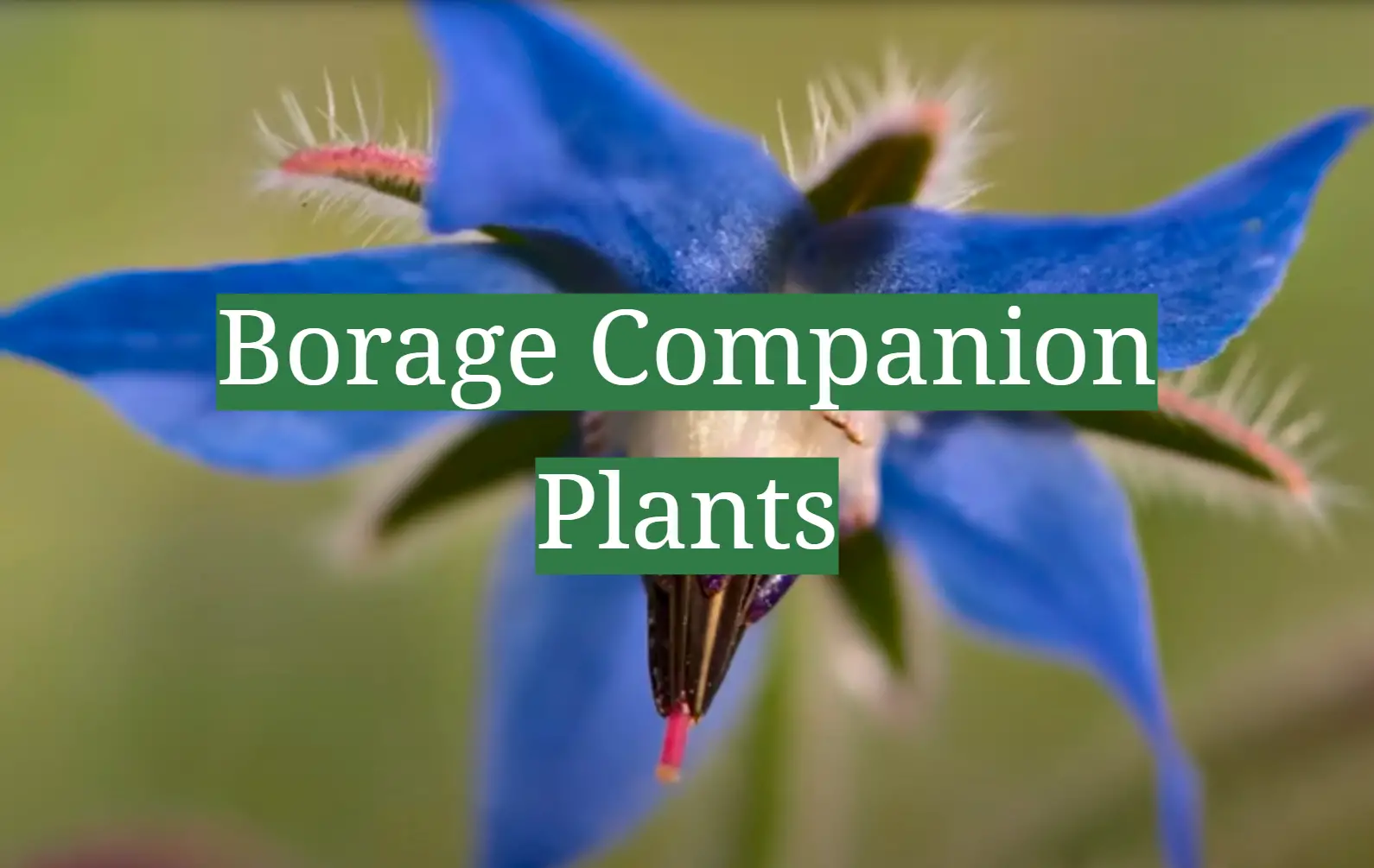Have you ever daydreamed about creating an enchanting garden that bursts with vibrant, beautiful blooms and attracts a symphony of fluttering butterflies and buzzing bees? Well, look no further, because this comprehensive guide to planting borage with its perfect companions is about to take your gardening skills to new heights. Whether you’re a seasoned horticulturist or a novice green thumb, the harmonious combination of borage and its companions will not only elevate the aesthetic appeal of your garden but also nurture a thriving ecosystem. So, delve into the captivating world of borage companion plants and unlock the secrets to a flourishing and harmonious garden paradise.
Why Does Borage Need Companion Plants?
Repel Insects and Pest Control

Borage contains compounds that attract pollinators like bees while deterring harmful insects. It also produces a strong scent that can mask the scent of other susceptible plants, making them less appealing to pests. This natural pest control method is beneficial for organic gardeners, as it reduces the need for chemical insecticides.
Bring Pest Predators
Besides repelling pests, borage also attracts beneficial insects like ladybugs, lacewings, and predatory wasps. These insects are natural predators of common garden pests and can help keep your plants healthy without the use of harmful chemicals.
Planting borage near susceptible crops can bring these pest predators to your garden, creating a balanced ecosystem that benefits all plants. This is especially helpful for plants that are prone to aphid infestations, as ladybugs and lacewings are known to feed on these pests.
Improve Soil Health
Borage is a deep-rooted plant that can reach up to 2 feet in the ground. Its extensive root system helps break up compacted soil, allowing air and water to flow more freely. This improves soil drainage and prevents waterlogging, which can lead to root rot in plants.
Additionally, borage’s leaves and flowers are rich in nutrients such as nitrogen, potassium, and calcium. When these parts of the plant decompose, they release these nutrients into the soil, making it more fertile for other plants to grow. Planting borage near nutrient-hungry plants can help replenish the soil and improve overall plant health.
Increase Nutrients in Food
Not only does borage improve the soil’s nutrient content, but it can also increase the nutritional value of foods grown nearby. The flowers and leaves of borage are edible and rich in vitamins and minerals like vitamin C, calcium, and iron.
When planted near other crops, borage’s root system can bring up these nutrients from deep within the soil and make them more accessible to neighboring plants. As a result, the vegetables grown near borage can have a higher nutritional value, making them healthier for consumption.
Benefit from Borage’s Shade and Moisture
Borage is a fast-growing plant that can reach up to 3 feet in height. Its large leaves create shade for nearby plants, protecting them from the scorching sun and reducing water evaporation from the soil.
Additionally, borage has a high water requirement and can help retain moisture in the soil. This is especially beneficial for plants that require consistent moisture, such as cucumbers and lettuce. Planting borage in between rows of these plants can help keep the soil moist and reduce water stress on them [1].
Top 15 Best Companion Plants for Borage
Basil

Basil is a popular herb used in cooking and medicine, making it a great companion plant for borage. Both plants have similar growing requirements, with basil also being heat-tolerant and drought-resistant. Basil can help repel pests such as aphids and tomato hornworms, which are common enemies of borage.
Bean
Beans are a nitrogen-fixing plant, meaning they can help improve the soil’s fertility. Borage, on the other hand, is a heavy feeder and can benefit from the nutrients provided by beans. Planting beans near borage also helps attract pollinators, which are essential for borage to produce flowers and seeds.
Cabbage
Cabbage is known to be a good companion plant for borage because it can help repel pests such as cabbage worms and cabbage loopers. These pests can damage borage plants, causing stunted growth or even death. Planting these two together can also help conserve space in the garden.
Cucumbers
Cucumbers and borage are both heat-loving plants, making them ideal companions. Borage can help improve cucumber’s resistance to pests and diseases, while cucumbers can provide shade for the shallow-rooted borage. The two also have a mutualistic relationship, with cucumbers attracting pollinators for borage in exchange for their nectar.
Eggplant
Eggplants, known as heavy feeders, thrive when planted alongside borage. This symbiotic relationship benefits both plants by enhancing the soil’s fertility and optimizing nutrient uptake. Additionally, borage acts as a natural magnet for pollinators and beneficial insects, creating a diverse ecosystem that helps control common eggplant pests like aphids and flea beetles. By fostering this mutually beneficial partnership, gardeners can create a flourishing and resilient garden environment.
Grapes
Grapes and borage make excellent companions, with borage acting as a natural ground cover for grape vines. Borage’s shallow root system can help reduce water competition and erosion around the base of grape plants. Also, borage flowers attract pollinators that aid in fertilizing grape plants, resulting in better fruit production.
Marigolds

Marigolds are known to repel harmful pests and attract beneficial insects, making them an excellent companion plant for borage. Planting marigolds near borage can help protect it against aphids, spider mites, and cabbage worms while attracting pollinators like bees and butterflies. Marigolds also have a deep root system that helps improve soil structure and nutrient availability for borage.
Melons
Melons and borage share similar growing requirements, making them natural companions in the garden. Borage’s deep taproot can help loosen compacted soil, improving drainage for melon plants. Melon vines also provide shade for borage, helping to keep its shallow roots cool during hot summer months.
Peas
Radishes
Radishes grow quickly and can be harvested early in the growing season, making them an ideal companion plant for borage. Borage, with its deep taproot, can help break up compacted soil and improve drainage for radish plants. Planting these two together also provides a natural deterrent against pests like root maggots and flea beetles.
Peppers
Peppers and borage are a match made in heaven, with both plants thriving in hot and dry conditions. Borage’s deep root system helps retain moisture in the soil, benefiting pepper plants that have shallow roots. The flowers of borage also attract pollinators like bees and hoverflies, which can help increase pepper plant’s yield.
Pumpkins
Pumpkins and borage make an excellent companion in the garden. Borage, with its vibrant blue flowers and fuzzy leaves, acts as a natural pest repellent for pumpkin plants. Not only does it deter harmful insects, but the flowers of borage also attract beneficial pollinators, such as bees and butterflies, which aid in the fertilization process and lead to better fruit production for the pumpkins. Additionally, the sprawling vines of the pumpkin plants provide a natural shade canopy for the borage, creating a microclimate that suits its preference for partial shade during hot summer months. This harmonious relationship between pumpkins and borage not only enhances the aesthetic appeal of the garden but also promotes a healthy and thriving ecosystem.
Strawberry

Strawberries and borage make an excellent combination in the garden. Borage not only acts as a natural pest deterrent for strawberry plants but also offers a host of additional benefits. With its deep taproot, borage aids in improving soil structure and drainage, which are crucial for maintaining the health and vigor of strawberry plants. By planting these two together, you not only maximize your garden space but also create a symbiotic relationship that promotes the overall well-being of your plants. It’s a win-win situation for both your strawberries and borage!
Squash
Squash and borage are not only ideal companions in the garden, but they also have a symbiotic relationship that benefits both plants. Borage, with its beautiful blue flowers, acts as a natural pest repellent for squash plants, keeping common pests like aphids at bay. But it doesn’t stop there – borage’s deep taproot helps break up compacted soil and improve drainage, creating a healthier growing environment for squash. Additionally, both plants share similar water requirements, making it easier for gardeners to manage water usage and ensure optimal growth for both squash and borage. So, by planting these two together, you’re not only enhancing the beauty of your garden but also promoting a harmonious and thriving ecosystem.
Tomatoes
Tomatoes and borage are a popular companion pair in the garden, with both plants providing mutual benefits to each other. Borage’s deep taproot can help improve soil structure and nutrient availability for tomato plants, resulting in better growth and yield. Tomato plants also provide support for borage’s tall stems, preventing them from bending or breaking under their weight [2].
Top 3 Worst Companion Plants for Borage
Potatoes

Borage and potatoes are often mistaken to be good companion plants because of borage’s ability to repel tomato hornworms. However, borage can hurt the growth and development of potatoes. Borage has been found to reduce potato yields by inhibiting the growth of their roots. This makes it difficult for potatoes to absorb nutrients from the soil, leading to stunted growth and smaller yields.
Fennel
Fennel is a great companion plant for many plants, but not for borage. Both plants contain high amounts of nectar and attract similar pollinators, creating competition for resources. This can lead to decreased pollination and reduced yields for both plants.
In addition, fennel produces compounds that can inhibit the growth of borage and other nearby plants. This can lead to stunted growth and smaller yields for borage.
To avoid these issues, it is best to keep fennel and borage separated in the garden. If you want to grow them together, make sure to plant them at least 3-4 feet apart.
Black Walnut Trees
Black walnut trees produce a chemical called juglone, which can be toxic to many plants. Borage is particularly sensitive to juglone and can quickly wither and die when planted near black walnut trees.
In addition, the shade produced by black walnut trees can also negatively affect borage’s growth and development. Borage requires full sun for optimal growth, so planting it near black walnut trees may result in smaller and less productive plants.

FAQ
Is borage good for companion planting?
Yes, borage is considered to be a beneficial companion plant for many vegetables and herbs. It helps attract pollinators and repel pests with its bright blue flowers and strong scent. Borage also has deep roots that can help break up compacted soil and bring nutrients to the surface. It is especially recommended as a companion plant for tomatoes, strawberries, squash, and cabbage.
Can I eat borage flowers?
Yes, borage flowers are edible and have a subtle cucumber-like flavor. They can be added to salads, and drinks, or used as a garnish. However, it is important to note that some people may have an adverse reaction to borage, so it is recommended to try a small amount first before consuming larger quantities.
Is borage invasive?
Borage is considered to be an invasive plant in some areas because it can self-seed and spread quickly. However, its deep roots also make it easy to pull out if it becomes too abundant. It is recommended to monitor its growth and remove any unwanted plants before they have a chance to spread.
What veggies like borage?
Some vegetables that benefit from borage as a companion plant include tomatoes, strawberries, squash, and cabbage. Borage can also be planted near beans, cucumbers, and melons to help increase their growth and flavor. It is not recommended to plant borage near plants in the mint family or with fennel as they may compete for resources.
What goes with borage?
Borage is a versatile herb that pairs well with many different foods. Its subtle cucumber-like flavor makes it a great addition to salads, soups, and stews. Borage can also be used in herbal teas or infused into oils or vinegar. Additionally, its edible flowers make for a beautiful and flavorful garnish on desserts and cocktails. When cooking with borage, it is important to use it sparingly as its flavor can be overpowering in large quantities. So, borage goes well with a variety of dishes and adds a unique flavor and visual appeal to any meal.
Is borage safe for pets?
Borage is generally considered safe for pets, but caution should be taken when feeding them in large quantities. Its prickly stems and fuzzy leaves may cause discomfort if ingested. Additionally, some pets may have an adverse reaction to borage, so it is recommended to introduce it slowly into their diet and monitor for any reactions. As always, consult with a veterinarian before giving your pet any new food or herb.
Where is the best place to plant borage?
Borage is a hardy plant that can thrive in many different growing conditions. It prefers full sun to partial shade and well-drained soil. Borage can be planted directly in the ground or in containers, making it a great option for both garden beds and smaller spaces like balconies or patios. When choosing a location to plant borage, consider its potential height and spread as it can grow up to 3 feet tall and wide.
What are some other uses for borage?
Aside from its culinary and companion planting benefits, borage has been used for centuries in herbal medicine. Its leaves and flowers contain high levels of gamma-linolenic acid (GLA), a beneficial fatty acid that has anti-inflammatory properties. Borage has been traditionally used to treat respiratory and gastrointestinal issues, as well as skin conditions like eczema. However, it is important to consult with a healthcare professional before using borage for medicinal purposes. Additionally, borage can be used as a natural dye for fabrics and yarns, producing shades of blue and purple.
How do I harvest and store borage?
Borage leaves and flowers can be harvested throughout the growing season. The best time to harvest is in the morning when the plant’s essential oils are most potent. To harvest, simply cut off the leaves or flowers using clean scissors or garden shears. Borage leaves can be used fresh or dried for later use, while flowers should be used immediately for maximum flavor and color. To store borage, hang the leaves in a cool, dry place or freeze them for later use. Flowers can also be dried and stored in an airtight container. Borage will continue to grow and produce throughout the season if trimmed regularly, making it a sustainable herb to have in your garden.
Who should not use borage?
While borage has many potential benefits, it is not suitable for everyone. Pregnant and breastfeeding women should avoid consuming borage as there is limited research on its safety during these times. Additionally, people with liver disease or bleeding disorders should consult with a healthcare professional before using borage medicinally. It is always important to do your own research and consult with a professional before using any new herb or supplement. If you experience any adverse reactions to borage, stop use immediately and seek medical attention if necessary. With proper knowledge and caution, borage can be a valuable addition to your garden and diet.
Useful Video: Companion Planting with Borage
Conclusion Paragraph
So, some plants can be companions to borage, such as strawberries, tomatoes and squash. Some plants should not be planted near borage like beans and peas because they can stunt its growth. In addition to companion planting, borage has many other benefits for both gardeners and the environment. It is a great pollinator plant, attracting bees and other beneficial insects to the garden. This helps with pollination of other plants and promotes a healthy ecosystem.
References:
- https://backyardgardenersnetwork.org/borage-companion-plants/
- https://thehometome.com/borage-companion-plants/










Leave a Reply
View Comments